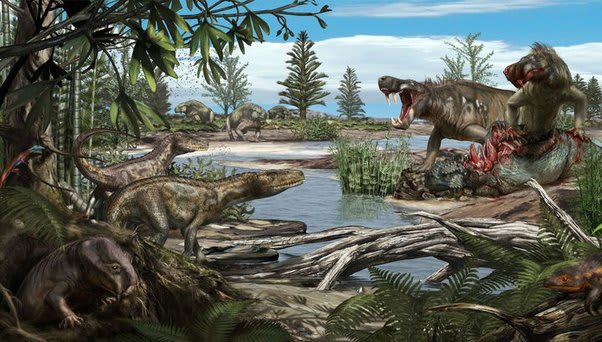Kazi Abul Monsur, Journalist#
When we think of ancient creatures, we often picture massive, terrifying dinosaurs. However, scientific research has revealed that dinosaurs emerged around 230 to 250 million years ago and ruled the Earth for approximately 160 million years.
According to the BBC, new studies indicate that the extinction of dinosaurs due to an asteroid impact might have been a part of a longer process that began at least 50 million years earlier. About 66 million years ago, a massive asteroid struck Earth, wiping out 75% to 80% of all species, including the remaining dinosaurs.
Despite this catastrophe, around 10% of surviving species eventually evolved into diverse new life forms, including mammals. However, some species had already been thriving in Earth’s waters long before dinosaurs appeared.
Jellyfish – The Oldest Surviving Marine Creature
Jellyfish, a fascinating marine species, are believed to be one of the oldest living organisms on Earth. Their ancestors, Ctenophora (Comb Jellies), date back 650 to 700 million years ago. Unlike dinosaurs, jellyfish adapted to deep-sea environments, allowing them to survive through Earth’s most catastrophic events.
These soft-bodied creatures are classified as invertebrates and have a gelatinous, translucent structure. Their unique biological makeup has allowed them to persist for millions of years, outliving even the mightiest prehistoric reptiles.
Cockroaches – Ancient Survivors from the Carboniferous Era
Scientists classify cockroaches as one of the most resilient species in history. Their ancestors emerged around 320 million years ago, making them significantly older than dinosaurs. Fossil evidence suggests that early cockroach species thrived in the Carboniferous period, long before dinosaurs dominated the planet.
The Origin of Life on Earth
The University of Chicago reports that while Earth was formed 4.5 billion years ago, it became suitable for complex life around 4.3 billion years ago. Water bodies started forming through asteroid and comet impacts around 4 billion years ago, providing the foundation for early life.
The first complex single-celled organisms likely emerged between 3.5 to 3.7 billion years ago in Earth’s oceans. Scientists believe that primitive bacteria were the earliest life forms. Fossil evidence confirms that by this time, microscopic life had already begun evolving into more complex structures.
Miller-Urey Experiment – Understanding the Origin of Life
To unravel the mystery of life’s origins, researchers at the University of Chicago conducted the Miller-Urey experiment. This study demonstrated that simple chemical reactions, driven by the conditions on early Earth, could create the essential building blocks of life.
Are We Alone in the Universe?
One of science’s greatest mysteries remains unanswered—is life unique to Earth, or does it exist elsewhere in the cosmos?
Our galaxy, the Milky Way, spans around 100,000 light-years, yet scientists have yet to find definitive proof of extraterrestrial life. Studying the conditions that led to life’s emergence on Earth can help us understand whether similar processes have occurred elsewhere in the universe.
Final Thoughts
The evolution of life on Earth remains one of the most exciting scientific frontiers. From prehistoric jellyfish to the reign of the dinosaurs, and finally, the emergence of intelligent life, Earth’s history is filled with incredible stories of survival and adaptation. As research continues, we may one day uncover whether life exists beyond our planet.##



মন্তব্যসমূহ বন্ধ করা হয়.